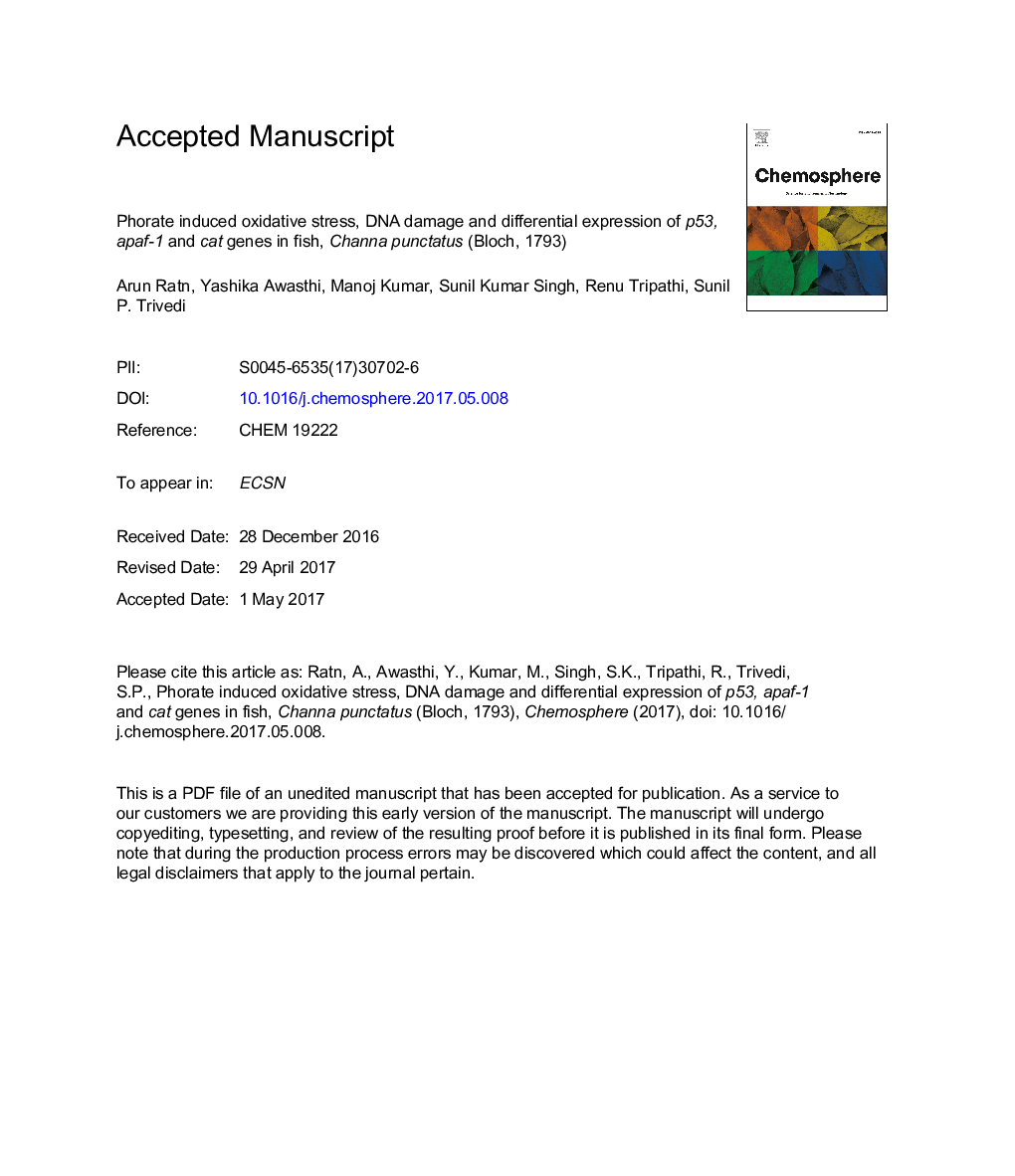| Article ID | Journal | Published Year | Pages | File Type |
|---|---|---|---|---|
| 5746912 | Chemosphere | 2017 | 43 Pages |
Abstract
The present study was conducted to assess the in-vivo activities of certain molecular biomarkers under the impact of phorate exposure. Fish, Channa punctatus (35 ± 3.0 g; 14.5 ± 1.0 cm; Actinopterygii) were subjected to semi-static conditions having 5% (0.0375 mg/L for T1 group) and 10% of 96 h-LC50 (0.075 mg/L for T2 group) of phorate exposure for 15 and 30 d. The oxidative stress was assessed in terms of superoxide dismutase (SOD) and catalase (CAT) activities. DNA damage was measured as induction of micronuclei (MN) and consequent differential expression of apoptotic genes-tumor suppressor (p53), apoptotic peptidase activating factor-1 (apaf-1) and catalase (cat) in liver and kidney, two major sites of biotransformation in fish, were quantified. Our findings reveal significant (p < 0.001) augmentations in SOD and CAT activities of liver and kidney tissues. MN frequency in erythrocytes of fish also increases significantly (p < 0.05) in a dose- and time-dependent manner. The mRNA level of p53 increased significantly (p < 0.05) in liver at 10% of 96 h-LC50 of phorate exposure after 30 d suggesting generation of stress due to accumulation of reactive oxygen species (ROS). Eventually, these findings decipher the dual role of ROS in generating genotoxicity as is evident by micronuclei induction and differential regulation of p53, apaf-1 and cat genes during the phorate induced DNA damage and apoptosis in test fish. The experimental inferences drawn on the basis of activities of aforesaid biomarkers shall be helpful in elucidating the possible causes of apoptosis under stressful conditions. Further, this study finds ample application in biomonitoring of phorate polluted aquatic ecosystem.
Related Topics
Life Sciences
Environmental Science
Environmental Chemistry
Authors
Arun Ratn, Yashika Awasthi, Manoj Kumar, Sunil Kumar Singh, Renu Tripathi, Sunil P. Trivedi,
